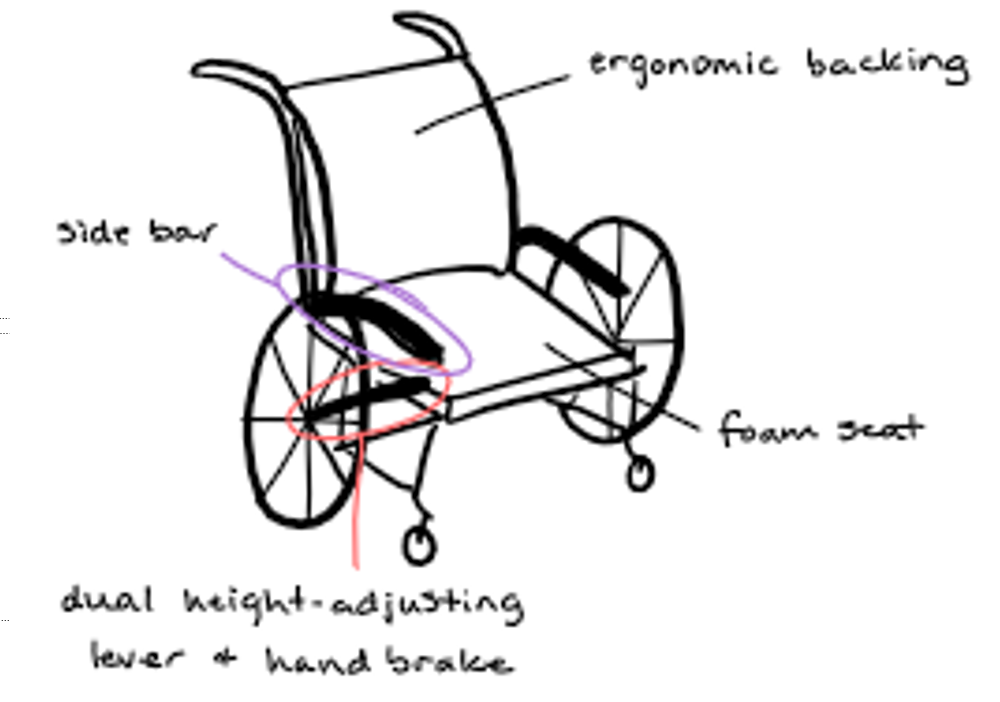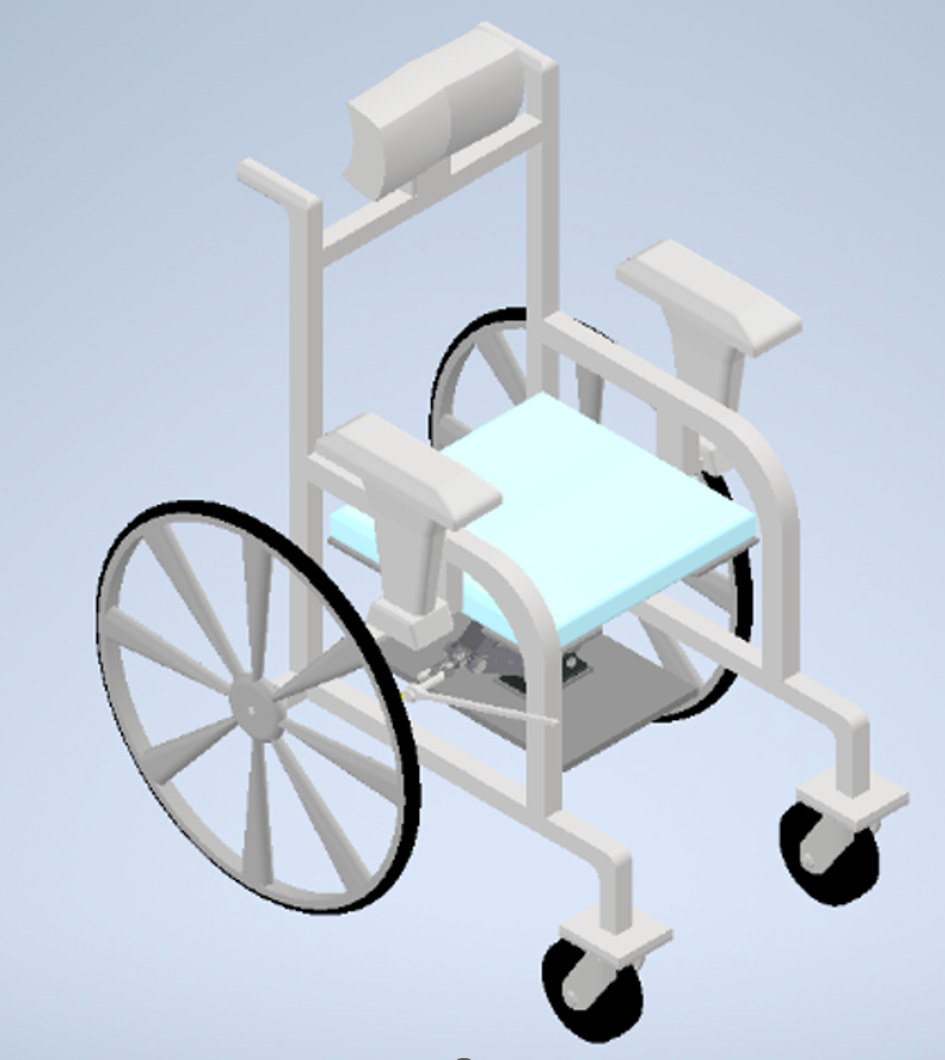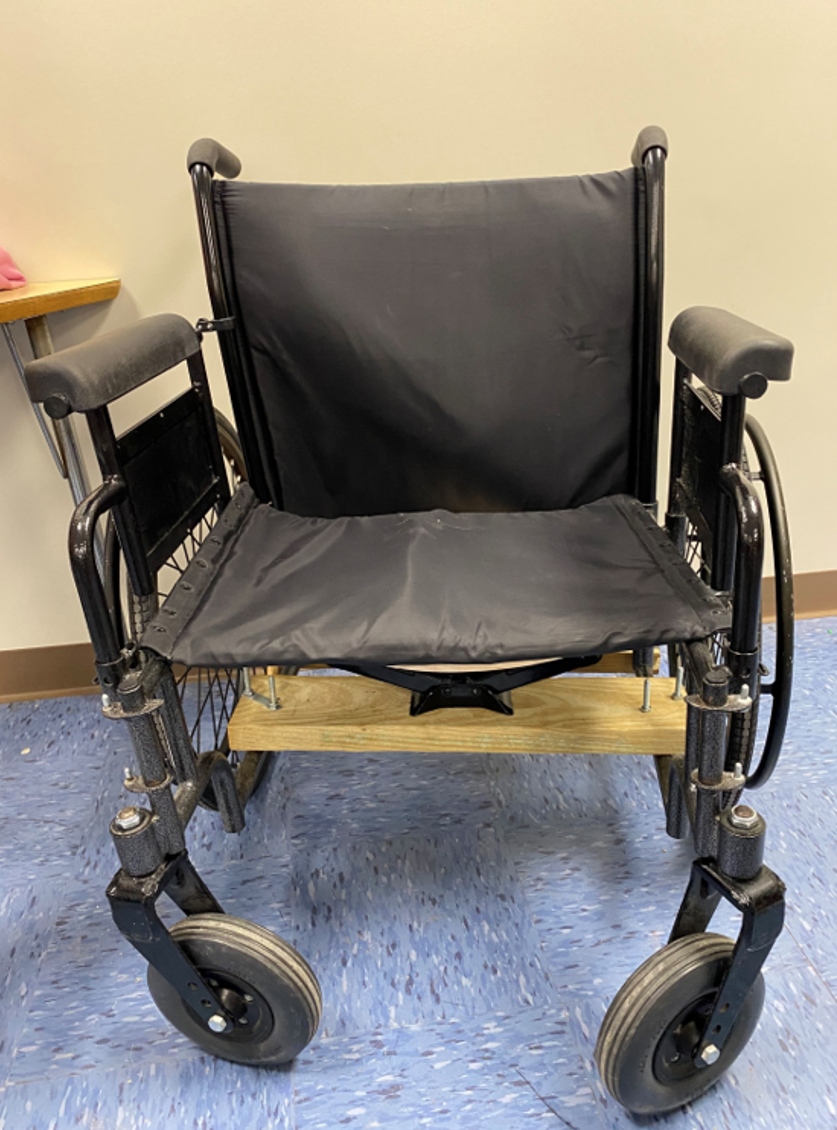Overview
This project was my first true foray into engineering design for a prolonged length of time. The focus of this project was to help improve lives in some way. Our team decided to target wheelchair users, specifically how to improve their independence and mobility. We identified the issue of wheelchair transfer—moving to/from the wheelchair to an alternate surface such as a bed, couch, or toilet. Our final design was a purely mechanical solution that allows wheelchair users to easily adjust the base height and transfer to a new surface.
Design
Our product was a full wheelchair with additional components, including a crankshaft and scissor lift, to allow users to transfer between surfaces easily. I designed and modeled several components for this project in CAD and contributed to the idea generation. Below are images of our initial design and CAD model.


Research
Since none of our team members were wheelchair users, we conducted thorough research to understand wheelchair transfer and ensure we weren’t creating more problems or reinventing the wheel. We conducted user surveys, talked with nurse aides, and interviewed physical therapists. After thorough research, we designed our solution and began developing a physical prototype.
Prototype
To test the function and capabilities of our design, we created a full-scale prototype using a used wheelchair as our base. In an actual product, the wheelchair would be built with our design from the start. However, due to time and budget constraints, we opted for a used wheelchair. We added a scissor lift and crankshaft under the wheelchair seat to allow height adjustment. Testing showed that our design allowed users to adjust the height by up to 8 inches.

Future Improvements
Looking back, there are several improvements that could enhance the design, making it easier to use, safer, and overall better. First, retrofitting a used wheelchair, while economical, is not an ideal representation of the actual product. Additionally, budget constraints limited some design aspects, affecting functionality. The added mechanism also made the wheelchair significantly heavier, which could be an issue for users manually pushing the wheelchair. Incorporating electronics and a lighter lifting mechanism would improve the user experience and safety, preventing accidental failures. Overall, while there are many potential improvements, the project was a valuable learning experience.